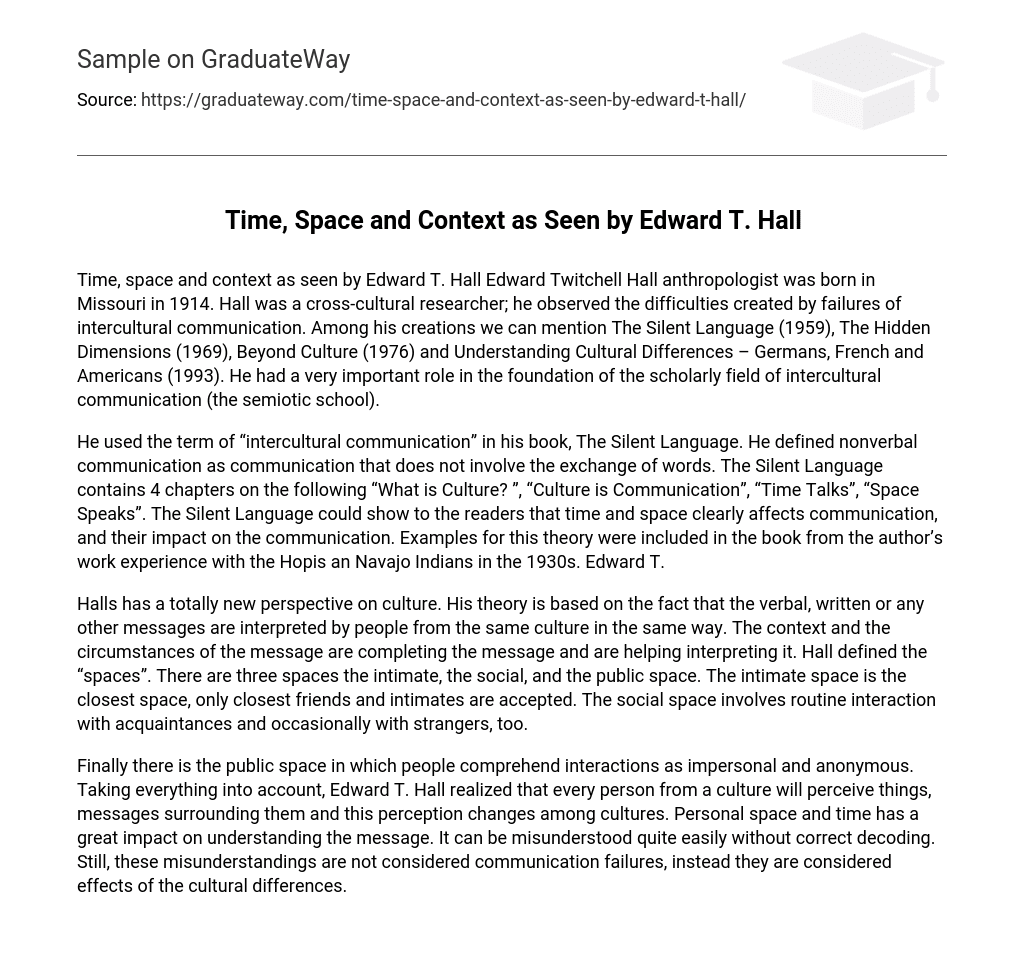Time, space and context as seen by Edward T. Hall Edward Twitchell Hall anthropologist was born in Missouri in 1914. Hall was a cross-cultural researcher; he observed the difficulties created by failures of intercultural communication. Among his creations we can mention The Silent Language (1959), The Hidden Dimensions (1969), Beyond Culture (1976) and Understanding Cultural Differences – Germans, French and Americans (1993). He had a very important role in the foundation of the scholarly field of intercultural communication (the semiotic school).
He used the term of “intercultural communication” in his book, The Silent Language. He defined nonverbal communication as communication that does not involve the exchange of words. The Silent Language contains 4 chapters on the following “What is Culture? ”, “Culture is Communication”, “Time Talks”, “Space Speaks”. The Silent Language could show to the readers that time and space clearly affects communication, and their impact on the communication. Examples for this theory were included in the book from the author’s work experience with the Hopis an Navajo Indians in the 1930s. Edward T.
Halls has a totally new perspective on culture. His theory is based on the fact that the verbal, written or any other messages are interpreted by people from the same culture in the same way. The context and the circumstances of the message are completing the message and are helping interpreting it. Hall defined the “spaces”. There are three spaces the intimate, the social, and the public space. The intimate space is the closest space, only closest friends and intimates are accepted. The social space involves routine interaction with acquaintances and occasionally with strangers, too.
Finally there is the public space in which people comprehend interactions as impersonal and anonymous. Taking everything into account, Edward T. Hall realized that every person from a culture will perceive things, messages surrounding them and this perception changes among cultures. Personal space and time has a great impact on understanding the message. It can be misunderstood quite easily without correct decoding. Still, these misunderstandings are not considered communication failures, instead they are considered effects of the cultural differences.





